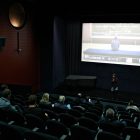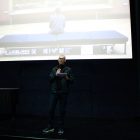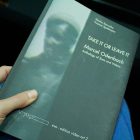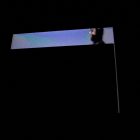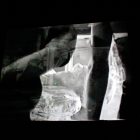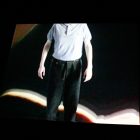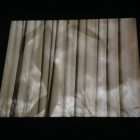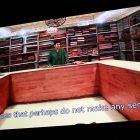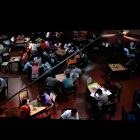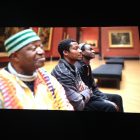DIVA Station, Slovenian Cinematheque / Kino-integral, World Day for Audiovisual Heritage
Video program with commentary by Slavko Kačunko
Presentation of Theories of Video Art (EVA Anthologies)
Saturday, October 27, 7pm
Slovenian Cinematheque, Miklošičeva 28, Ljubljana
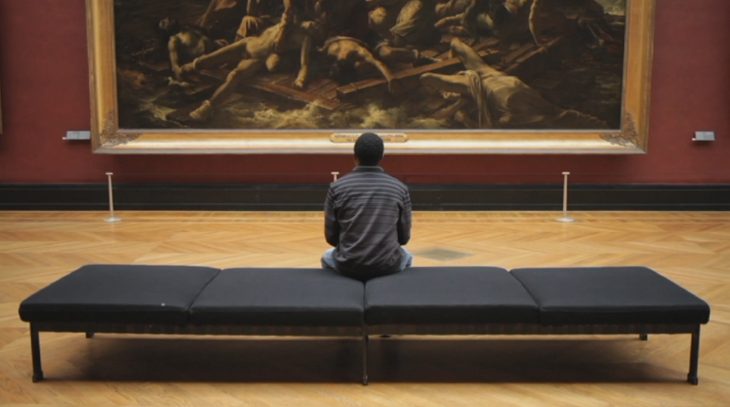
Physical and web archive of video and new media art DIVA Station each year marks the World Day for Audiovisual Heritage – 27th of October, pronounced for the first time in 2005 by UNESCO. Our goal is to emphasize the meaning of archives and audiovisual material as an important part of cultural heritage.
This year the Slovenian Cinematheque and Slavko Kačunko (University of Copenhagen), who will present a 70-minutes video program by distinguished German video artist Marcel Odenbach, join us at the celebration. Marcel Odenbach (born 1953) is one of the pioneers of video art in Germany and his works are remarkable introspections on the German society. The selection of works combines a retrospective orientation with an attempt to cover the major thematic emphases in the artist’s oeuvre.
Additionally, and very briefly, also the recently published Theories of Video Art (3rd and 4th issue of EVA – Edition Video Art, Logos Verlag Berlin 2018) will be introduced. This comprehensive two volume-anthology offers an invaluable source for an interdisciplinary study of video, media- and contemporary art as well as the accompanying theories. It covers a generation of critical writing published 1988-2018 and includes texts by 40 female authors, as well as 5 recent interviews. (A more comprehensive presentation of both anthologies will be organized the same day, at 5pm, in the Škuc Gallery).
MARCEL ODENBACH (video program)
- The distance between myself and my losses (Die Distanz zwischen mir und meinen Verlusten), Germany, 1983, digital format (orig, U-Matic), colour, sound, 10′
- Estar de pie es no caerse [Standing is not Falling (Stehen ist nicht umfallen)], Germany, 1989, digital format (orig. U-Matic), colour, sound, 5′
- The big window – insight, looking out (Das große Fenster – Einblick eines Ausblicks),
Germany, 2001, digital format (orig. DV), colour, sound, 12′
- Disturbed Places – Five Variations on India, Germany, 2007, digital format (orig. DV), colour, sound, 34′
- Not able to swim in the Shipwreck (Im Schiffbruch nicht schwimmen können), Germany, 2011, digital format (orig. DV), colour, sound, 9′
Marcel Odenbach, born in Cologne in 1953, has influenced the development of video and media art more than any other German artist of his generation has. He studied architecture, art history and semiotics from the mid- to late seventies, when he began working in video with tapes, installations, performances and drawings. Being one of the most internationally recognized German artists working in video today, he is credited with a pre-eminence that has influenced the development of video as a medium in art. His experiments with narrative, representation and production techniques (including repetition, fade, dissolve, slow motion, sampling from historical film footage, hypnotic sound tracks and his division and masking of the frame and screen), presentation (from single channel to multi-channel) and installation practices have established the ground for contemporary video art practice.
 Slavko Kačunko was born in Osijek (Croatia) where he studied art history and philosophy. He received a Ph.D. and the post-doctoral qualification in Art History from the University of Düsseldorf (1999) and Osnabrück (2006). Since 2011, Kacunko is Professor for Art History and Visual Culture at the University of Copenhagen. Since 2014, he is elected member of ‘Academia Europaea’.
Slavko Kačunko was born in Osijek (Croatia) where he studied art history and philosophy. He received a Ph.D. and the post-doctoral qualification in Art History from the University of Düsseldorf (1999) and Osnabrück (2006). Since 2011, Kacunko is Professor for Art History and Visual Culture at the University of Copenhagen. Since 2014, he is elected member of ‘Academia Europaea’.
Key foci of Kacunko´s research profile are Video, Performance, Installation, Visual studies and Aesthetics. For his interdisciplinary approach in Art History and Media Studies, he received international recognition. His habilitation Closed Circuit Videoinstallationen (2004) was referred to as a “milestone in the history of media art” and “the pivotal source book for the decades to come”. His dissertation Marcel Odenbach. Konzept, Performance, Video, Installation (1999) was the first academic monograph on one German video artist, described as an “Art history pioneer achievement in the field of video art” and awarded with the DRUPA-prize 2000.
Kačunko has furthermore authored monographs Sabine Kačunko: Bacteria, Art and other Bagatelles (2016), Culture as Capital (2015) Wiederholung, Differenz und infinitesimale Ästhetik. Matthias Neuenhofer (2012), Las Meninas Transmedial (2001), and Dieter Kiessling (2001) as well as and Spiegel. Medium. Kunst (2010). Recently he edited a comprehensive two-volume anthology Theorien der Videokunst (2018).
Photo: Qëndresë Deda and SCCA-Ljubljana archive
Production: SCCA, Center for Contemporary Arts – Ljubljana / DIVA Station, Slovenian Cinematheque/Kino-integral
![]()
![]()
![]()
Supported by: City of Ljubljana – Department for Culture, Slovenian Film Centre, Republic of Slovenia Public Fund for Cultural Activities


